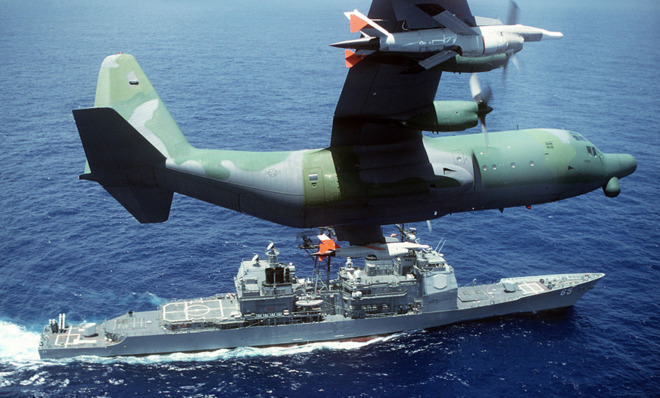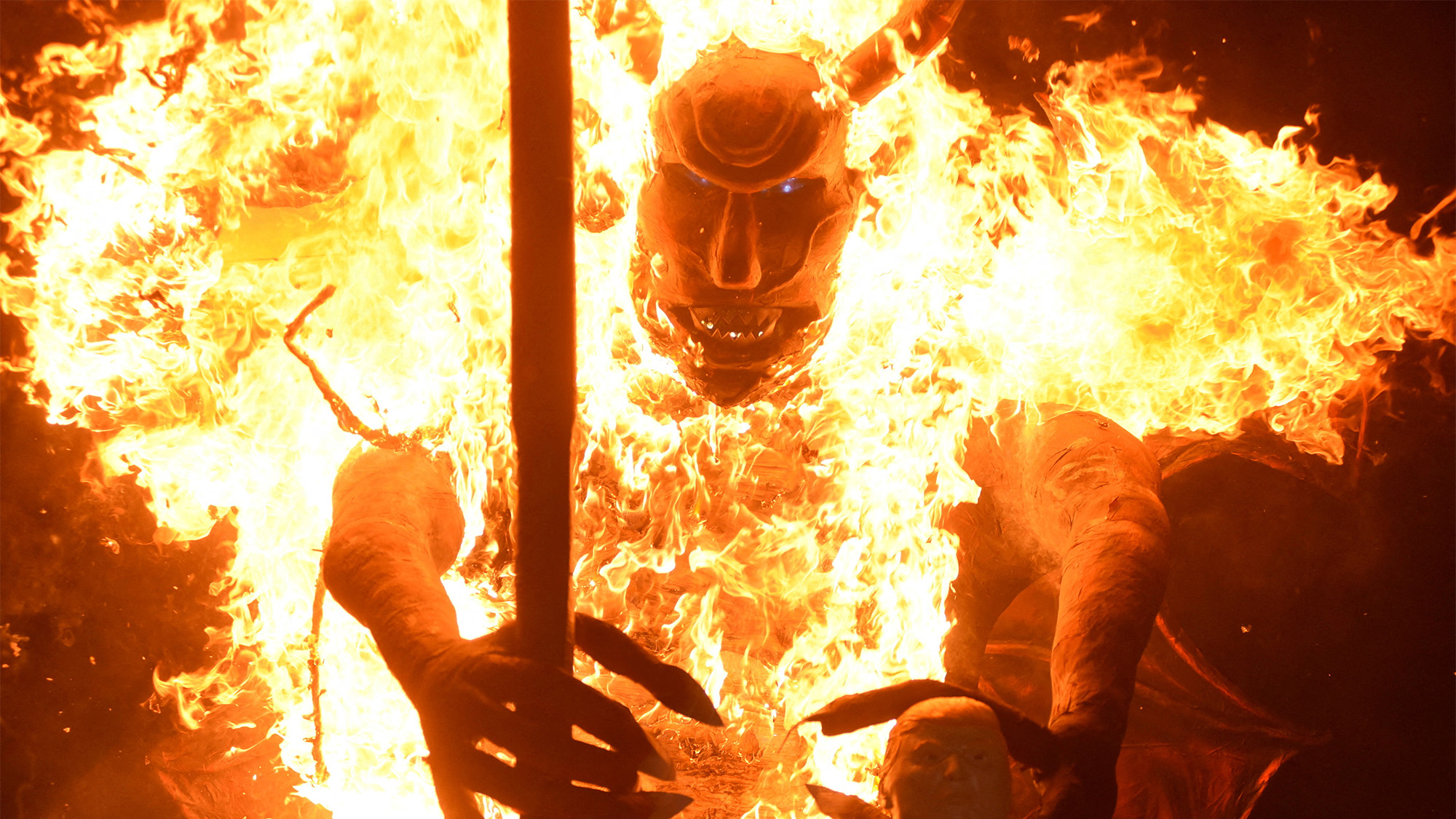Robots are the not-too-distant future of war
Armed sentry bots are already being placed on borders like Israel's and Korea's


The need for humans to participate in armed conflicts could soon be over. The next generation of military hardware might be able to think and act for itself.
Military hardware will soon consist of "autonomous robots that know neither pity nor fear" — quite a step up from the current generation of UAVs and drones operated by humans from the safety of military bases hundreds, if not thousands, of miles away.
Ever since drones such as the Predator were prepared and armed for use in Iraq and Afghanistan in the early 2000s, stealth weapons have played a key role in the West's "War on Terror." It was a Predator drone that located Osama Bin Laden in 2011, and it was a Predator drone that launched the missile attack earlier this month that killed Pakistani Taliban leader Hakimullah Mehsud. The drones have clocked more than 200,000 hours of flying time in Afghanistan since their inception.
The Week
Escape your echo chamber. Get the facts behind the news, plus analysis from multiple perspectives.

Sign up for The Week's Free Newsletters
From our morning news briefing to a weekly Good News Newsletter, get the best of The Week delivered directly to your inbox.
From our morning news briefing to a weekly Good News Newsletter, get the best of The Week delivered directly to your inbox.
Drone operators work in a safe environment, sometimes in a completely different country to the one that the aircraft flies in. They make judgment calls based on the situation they see on the computer screen in front of them. The success of the program has meant that the US Air Force is training more people to fly drones than it is conventional aircraft.
The legal battle over whether drones such as the Predator and the Reaper contravene international law is still raging. The basis of the argument against their use is that actions viewed thousands of miles away on a computer screen can be misinterpreted and the response could have severe consequences. That legal battle could get a whole lot tougher with the next generation. Future weapons will remove the human element from the equation completely; they will be able to engage targets by themselves, maximizing destruction. They will represent the age-old saying: "Shoot first, ask questions later."
But what will the next generation bring?
Of course, most next generation technology is carefully guarded and the plans are kept safely under lock and key, but you may have experienced the next generation of military hardware already.
A free daily email with the biggest news stories of the day – and the best features from TheWeek.com
If you've played Call of Duty: Black Ops 2, you'll be familiar with "futuristic" military technology such as Dragonfire quadrotors and the AGR, or Autonomous Ground Robot. That technology simply isn't that far away.
Take the Lodestar, for example. The Lodestar is a multiplayer killstreak that allows the player to control missiles fired from an aircraft flying above the map.
The Lodestar will become a real piece of military equipment when the US Air Force commissions the X47-B for an active combat role. The X47-B is currently in the demonstration and testing phase. It is an Unmanned Combat Air System capable of flying over targets without human control — think of it as similar to the creation depicted in the 2005 film Stealth.
The parallels between the virtual and real world don't stop there, though. Tom Clancy's Ghost Recon Future Soldier also featured future military technology. The live-action trailer for the game included something similar to Call of Duty's AGR, capable of engaging targets without the need of human interaction of acknowledgement.
It wouldn't be a lengthy stretch of the imagination to realize the people that worked on Black Ops 2 probably looked at the images of the X47B available at the time.
Step back to reality
This technology is being developed and it will be able to make its own decisions. Organizations such as Samsung and G-NIUS have developed early versions of military vehicles and equipment that can operate on their own.
Take G-NIUS, for example. Its website states it is "a leading Israeli unmanned ground systems company." They boast their technology can provide a solution to almost any defense situation, "whether it is 24/7, all-weather, all-terrain, homeland security missions you are interested in, or keeping your human assets out of harms way and revolutionizing the way in which your combat support and force protection tasks are being currently accomplished… G-NIUS has the precise solutions you are after."
One of its latest creations is the Guardium Mk.1. Guardium is an armed robotic vehicle that employs "state-of-the-art technologies and various combinations of payloads." It has been developed for deployment in closed perimeter sites such as airports, energy plants, and borders.
If you thought the G-NIUS was worrying, Samsung's SGR-1 will probably give pacifists nightmares for the rest of their lives. SGR-1 is, essentially, a sentry gun created to monitor the hotly contested Korean demilitarized zone. Its sensors can detect a human face at a distance of two miles and is capable of firing a machine gun or grenade launcher without human operation. The technology is also being used by Israel to monitor its borders.
Life under robot control
Imagine a world where robots dominate everything. There are some pretty good examples from the movie world — I, Robot, for one, springs to mind, although that is slightly different in the sense that the robots are used in the domestic sphere, rather than the military one.
The principle is very similar, though. If robots replace soldiers on the battlefield, war will descend into a game of chess where Generals will move their robotic pieces around the board without a care or concern for what actions are taking place.
If Generals are just moving piece of metal around a war zone, is that not the final realization of technological power? War will no longer be about defending a group of people or a nation, it will be about who has the biggest and best weapons. It won't matter whether removing a dictator is a good or bad thing if his weapons are more advanced because other nations simply won't be able to compete.
Imagine the international arms trade if robotic weapons entered the market. The demand for weapons that can control themselves will be huge. They would be a game-changer for nations that have been embroiled in lengthy civil wars or armed conflicts. Take the Taliban, for example. If they were able to source G-NIUS robots from Israel it would devastate Afghanistan completely, whether western powers were still present or not.
It's not all bad
While most military technology under development will be used in combat situations to kill enemies, some companies are working on ways to make war greener.
Just last week the Pentagon was treated to a showcase of upcoming developments by a G-4 Operational Energy team. The team showcased a number of technologies including new engines for Black Hawk and Apache helicopters that could save fourteen million gallons of fuel each year.
Also on display were solar-powered blankets and lighter, more efficient, batteries for existing technology. Both are designed to mean that soldiers carry less weight, although they could also be applied to the non-military world as part of relief efforts for humanitarian crises and natural disasters.
But what does it all mean for humanity?
Soldiers may actually have a "use-by date." In 20 to 30 years, we may inhabit a planet where foot soldiers are no longer necessary and robotic equipment has replaced them.
It would be narrow-minded to jump to such a conclusion, though. Just as the debate over the use of the current generation of drones is still raging on, that of the next generation is sure to last much longer. Removing the human element completely is very dangerous. The list of legal questions is lengthy and human rights campaigners will be sure to make the process long and arduous, and rightly so.
The legal process has already begun, even though much of the technology is still in research and development. A vote by the United Nations Convention on Conventional Weapons has meant a multinational team will begin to assess the technology with the aim of enforcing a pre-emptive prohibition before any of the technology reaches the production line.
More from The Kernel...
-
 The week’s best photos
The week’s best photosIn Pictures A man's best friend, the elephants in the room, and more
-
 A TikTok trend has Gen Z men leaving streetwear behind for more preppy attire
A TikTok trend has Gen Z men leaving streetwear behind for more preppy attireThe Explainer More than a zipper: Young Black men embrace the ‘quarter-zip movement‘
-
 Sudoku hard: December 12, 2025
Sudoku hard: December 12, 2025The daily hard sudoku puzzle from The Week
